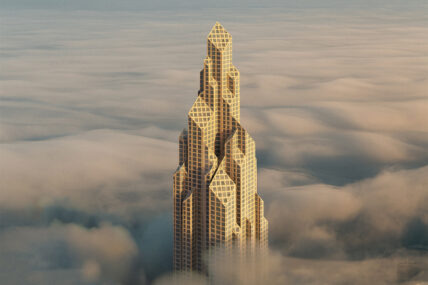Record Factory
Visualizing a Century-Old Record Factory’s Second Life
The sleeping giant
For decades, the old record factory stood mostly quiet, watching as the world around it changed. The complex—marked by brick wings and industrial geometry—occupied a strange position: too central to ignore, too industrial to easily rebrand in a metropolis.
This site once pressed 150,000 12-inch shellac discs a day, played at a speed of 78 revolutions per minute. But the old factory wasn’t a ruin; it was a sleeping story waiting to be awakened.
What changed was a few key investments, a shift in how cities value their industrial heritage, and a growing global appetite for hybrid spaces—places that blur the boundaries between work and life. Think Brooklyn’s dockyards, Rotterdam’s silos, or Barcelona’s textile lofts, each given new purpose not through demolition, but through thoughtful intervention.
Renaissance
When the development team approached us, they weren’t looking for standard architectural animation or conventional architectural rendering approaches. They wanted something that would capture the essence of creative transformation. The initial directive wasn’t simply about converting aging infrastructure into rentable square footage. The brief was more ambitious: the space needed to become a living creative ecosystem—occupied, inhabited, and energized by its community
It had to attract what we call the ‘culture-first tenant’—startups, design studios, media companies, and creative professionals who evaluate a space by its potential for collaboration before considering the lease terms. Unlike typical architectural rendering companies that focus solely on aesthetic presentation, our challenge was to orchestrate not just a visual renovation, but a complete renaissance on screen through concept-driven storytelling.
Industrial narrative
What stood out immediately was the site’s industrial narrative—the foundation for what we call a ‘signature animation’ approach. Rather than creating a simple walkthrough that simply goes room by room, we identified the central creative problem: how do you honor a century of manufacturing history while showcasing contemporary creative potential? This approach sets visualization studios apart from standard rendering architecture practices.
The original brick facades—those hand-laid walls bearing decades of patina—were fundamental to preserving the building’s character, as were the essential structural elements: high ceilings, open-plan studio spaces, steel-framed windows, and volumes generous enough for ambitious projects.
In our experience, the most valuable aspect of animation is presenting complex information and visions effectively in just 60 or 100 seconds—a curated experience that takes stakeholders and viewers by the hand rather than leaving them to interpret static renderings.
From vinyl to vision
In spaces where machinery once hummed and industrial processes filled the air, there is now the energy of creative collaboration and innovation. This architectural visualization project exemplified our ideal brief—one that called not just for animation, but for the articulation of creative possibility.
The acoustic memory of pressing vinyl records now harmonizes with the sounds of contemporary work—keyboards clacking, conversations flowing, and ideas taking shape. This captures our approach: honoring the past not as a museum piece, but as a foundation for new purpose.
The final animation doesn’t merely showcase a creative space; it presents the potential of a creative community—rooted in tradition, driven by integrity, and united by a shared vision for a better, more sustainable future.
Project details
Location
Non-disclosed
Partner
Non-disclosed
Services
Creative Concept Development
Architectural Animation
2D Illustration
Visual Effects (VFX)
Post Production
Team
Péter Kollar
Ilus Varga
Matteo Piccini
